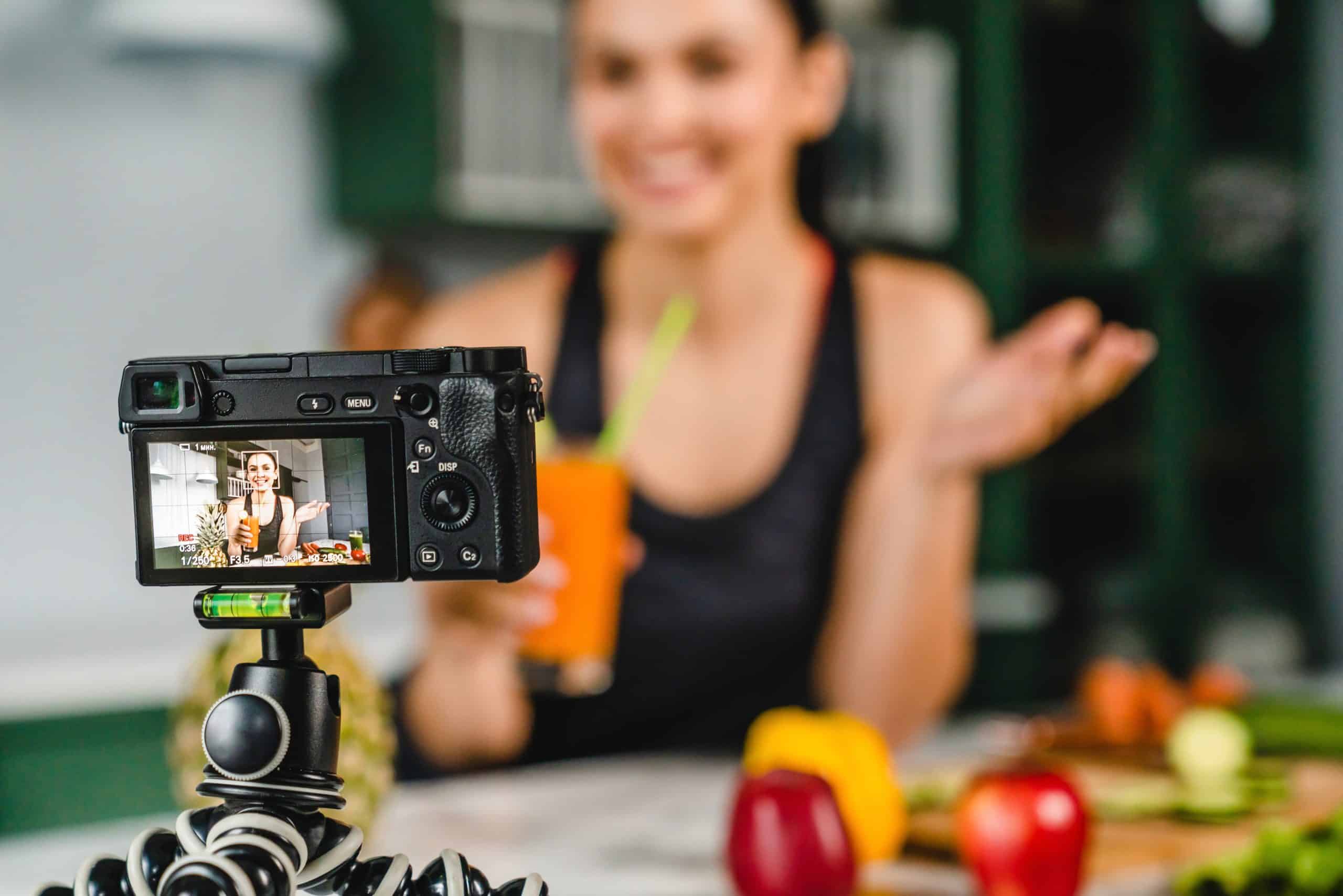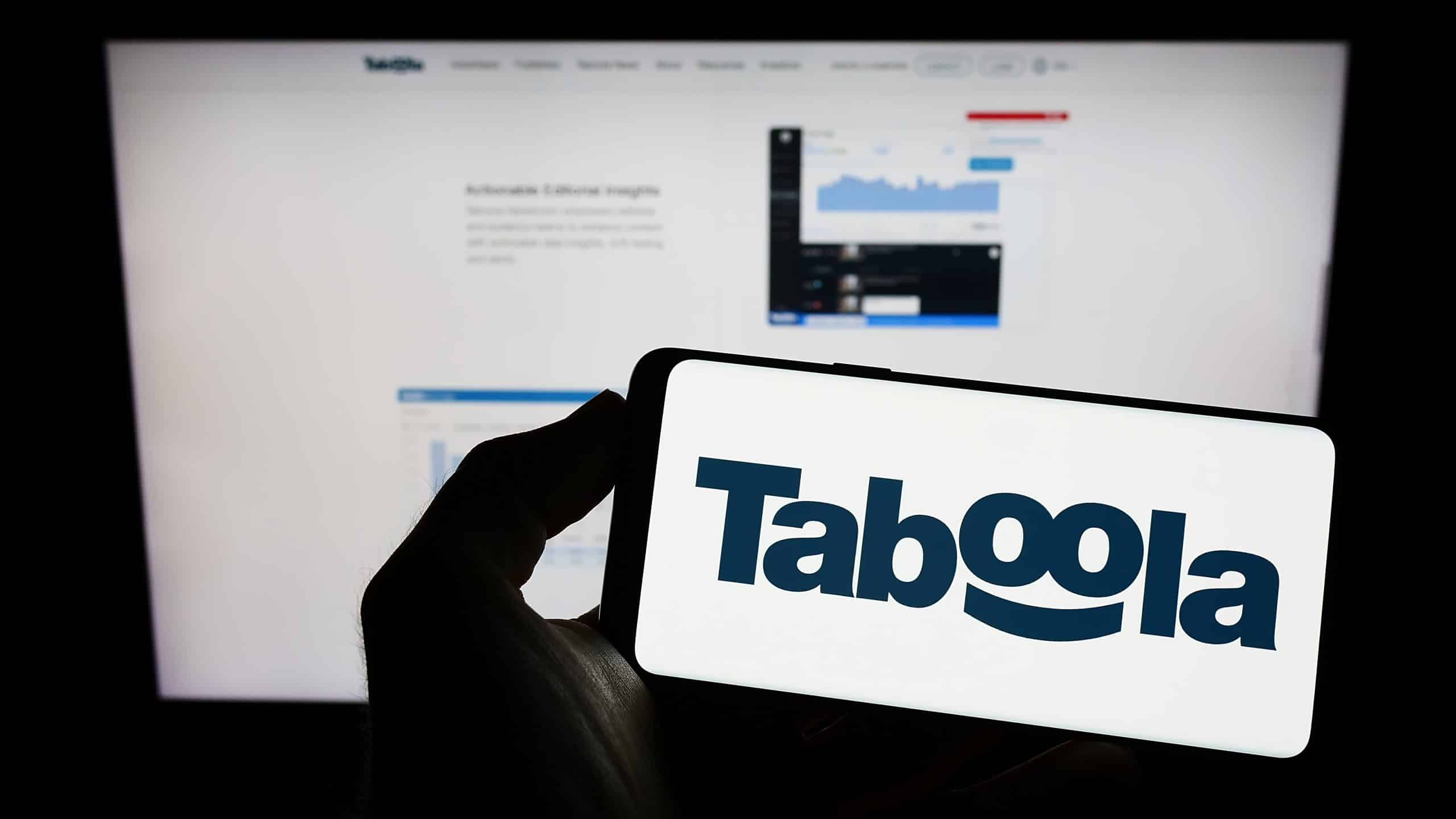As students prepare to head back into the classroom this year, back-to-school marketers have a major opportunity to reach these excited shoppers with engaging campaigns that drive record sales.
According to the National Retail Federation (NRF), 64% of back-to-school buyers expect to return to in-person learning this year, and 70% plan to start making purchases at least three weeks before school starts. It’s no wonder 77% of retailers expect to increase their marketing investments in back-to-school campaigns in 2021, as Ceros found.
To stand out amongst the competition, advertisers have to launch top-notch campaigns targeting the right audiences with enticing offers that inspire them to buy.
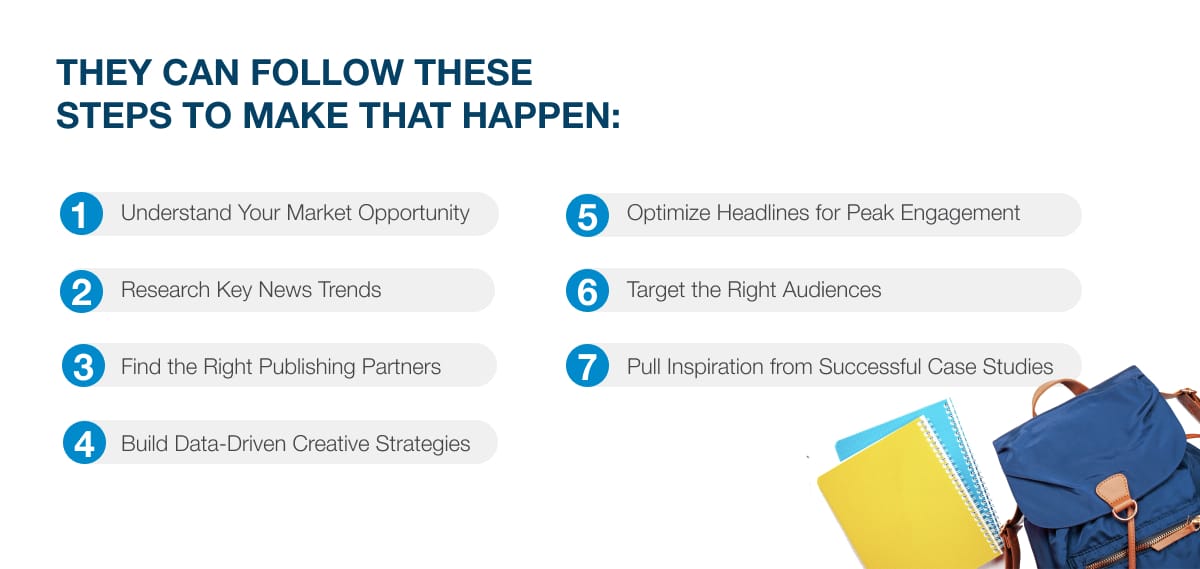
Let’s dive in further.
Understand Your Market Opportunity
Families expect to shell out an average of $849 each on school resources this year for a total of $37 billion — a record-high among NRF’s surveys.
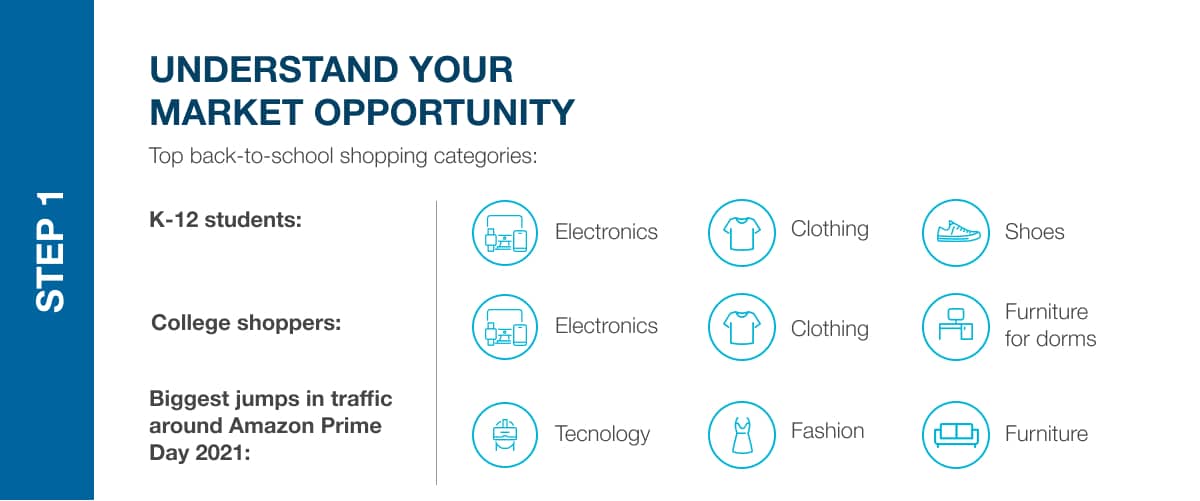
Specifically, the top back-to-school shopping categories for K-12 students include electronics, clothing, and shoes. Meanwhile college shoppers expect to spend on electronics, furniture for dorms, and clothing. After all, you have to look and feel your best for your big return to the classroom! No more hiding behind a Zoom screen.
These shopping categories also took center stage on Amazon Prime Day, which 84% of retailers say is the most important event for driving online back-to-school sales. According to our data, technology, fashion, and furniture content saw the biggest jumps in traffic around Amazon Prime Day 2021, with page views for Amazon sales content in general spiking over 340%. Explore more of Amazon Prime Day insights on holiday campaigns.
Research Key News Trends
To see which news categories are driving the most traffic among back-to-school shoppers, we pulled U.S. publisher data from May to July 2021.
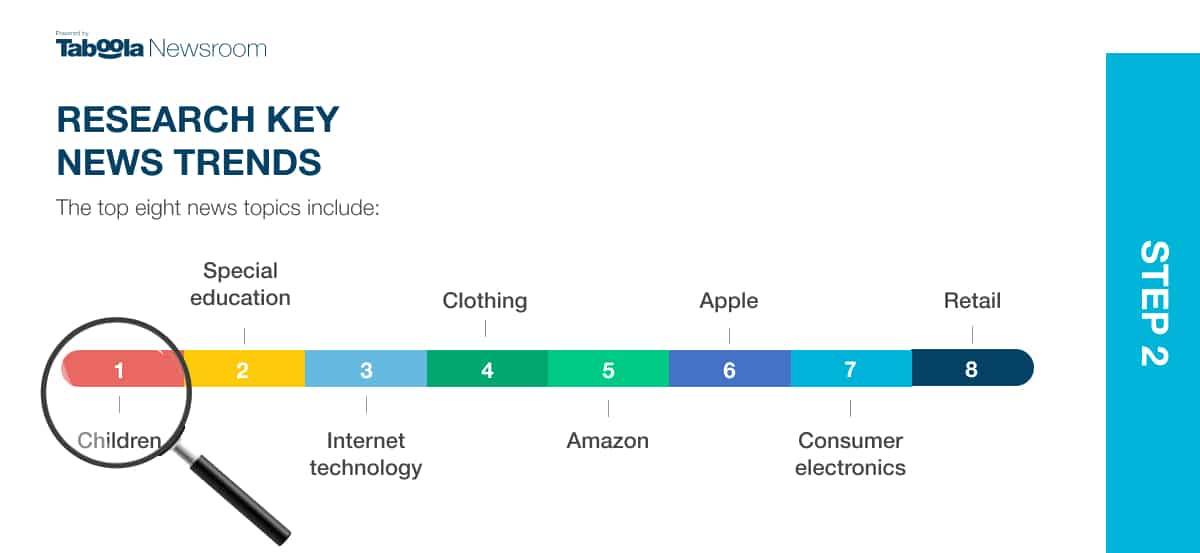
These categories also line up with NRF’s top shopping verticals, driving home the point that back-to-school families are largely investing in technology and fashion for the new school year.
Find the Right Publishing Partners
Advertisers can tap into this increased traffic by partnering with publishers who produce high-quality content in trending news categories.
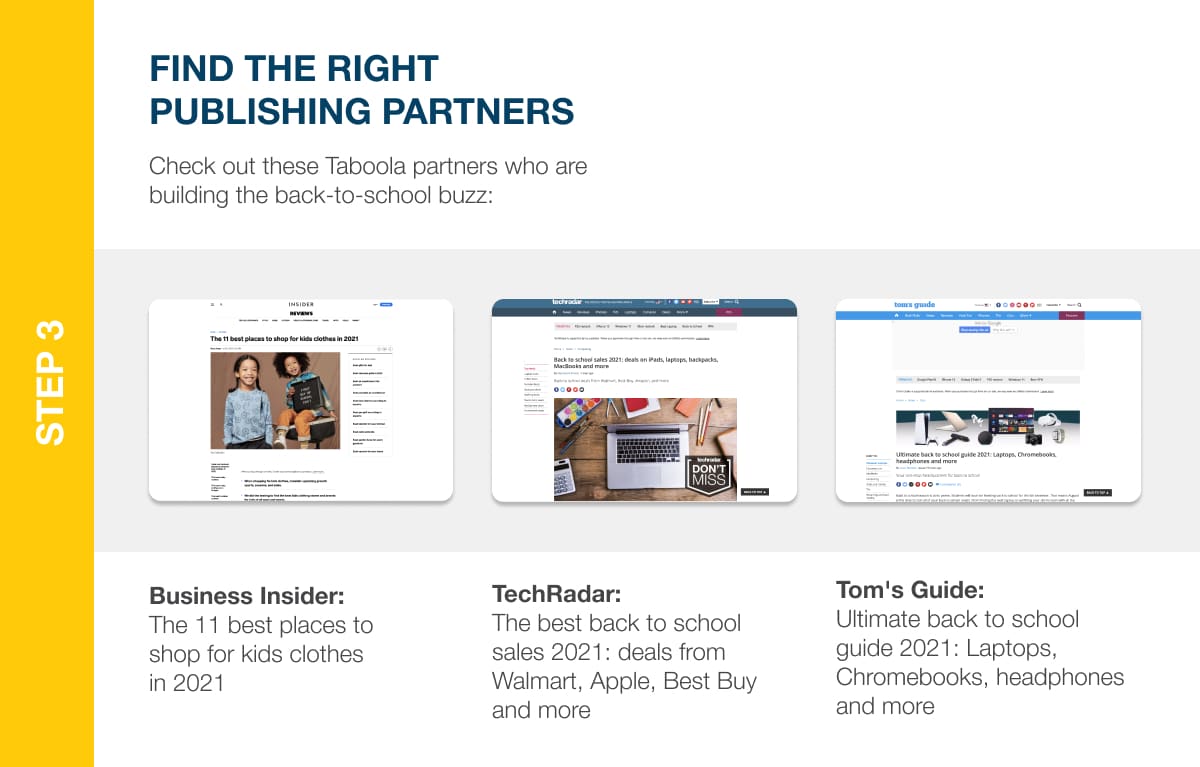
By advertising on the Taboola network, retailers can launch ads across thousands of premium media outlets like the ones above, reaching built-in audiences of engaged readers with their back-to-school messaging.
Build Data-Driven Creative Strategies
Not totally sure what back-to-school shoppers want to see in their ads? Just look at the data. We checked out Taboola Trends to see which types of education-related images and videos drive the most engagement among U.S. audiences during July 2021:
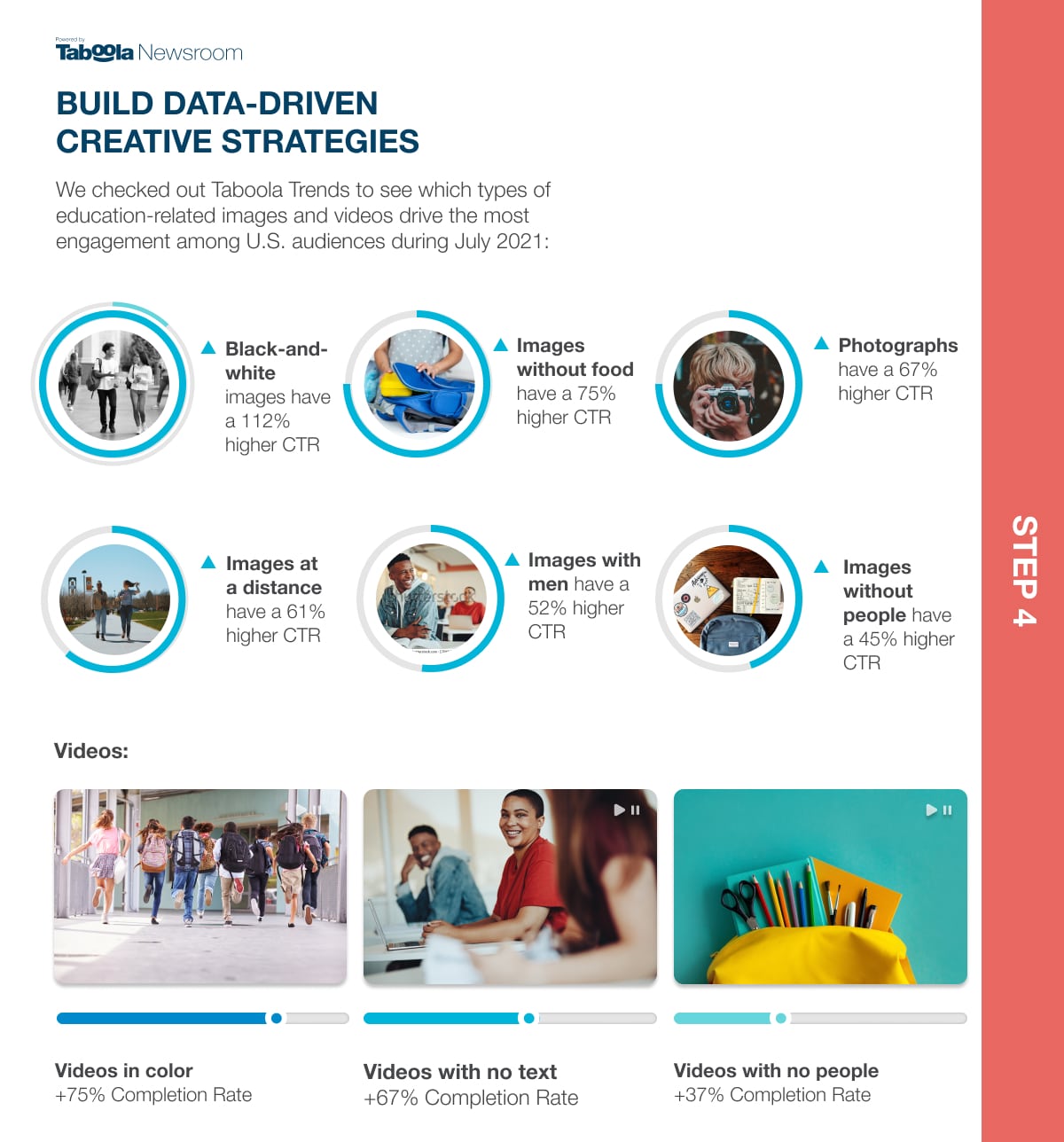
Optimize Headlines for Peak Engagement
The right headline can make or break a native ad on the open web. Especially in a saturated back-to-school market, you want to be sure your copy will catch each reader’s eye and motivate them to click.
That’s where the Taboola Title Analyzer comes in, providing real-time data about which of your title options will likely drive the highest CTR.
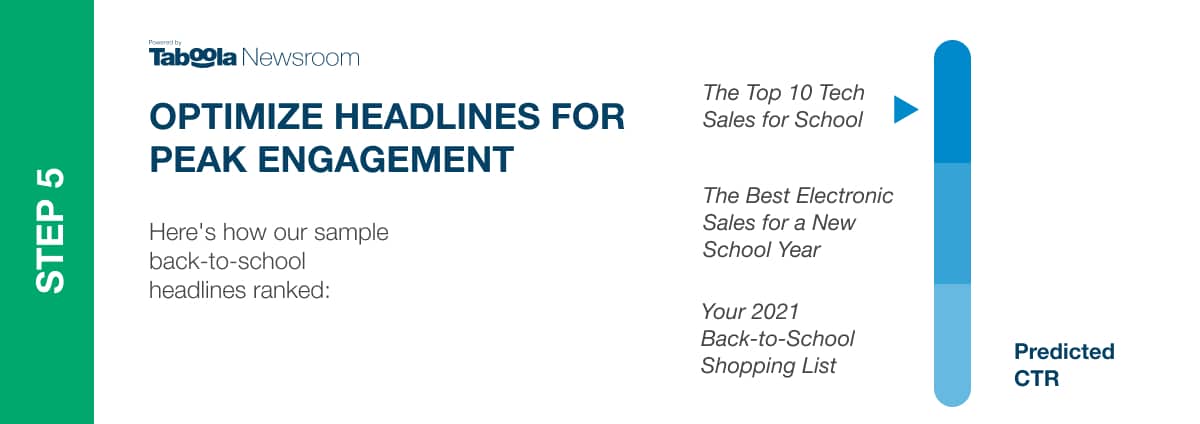
Target the Right Audience
Once you’ve nailed down the best creative practices, you’ll want to distribute your ads to the most relevant and interested audiences.

- Launch ads across desktop and tablet devices. Consumers of education-related content were more active on desktops and tablets — perhaps at work, school, and home — than on mobile devices. So reach these readers for increased leads, page views, and conversions.
- Automate campaigns with Smart Bid. Taboola’s Smart Bid automatically optimizes your bids to increase conversions. So you can beat out the competition but never spend more than you need to.
- Make high-impact placements to drive awareness. Use an experienced partner like Taboola to place your ads where they’re most likely to be seen — among high-quality, brand-safe content that shoppers are already consuming.
Pull Inspiration from Successful Case Studies
These organizations have already reaped the benefits of launching education-related native ads across top publisher sites.
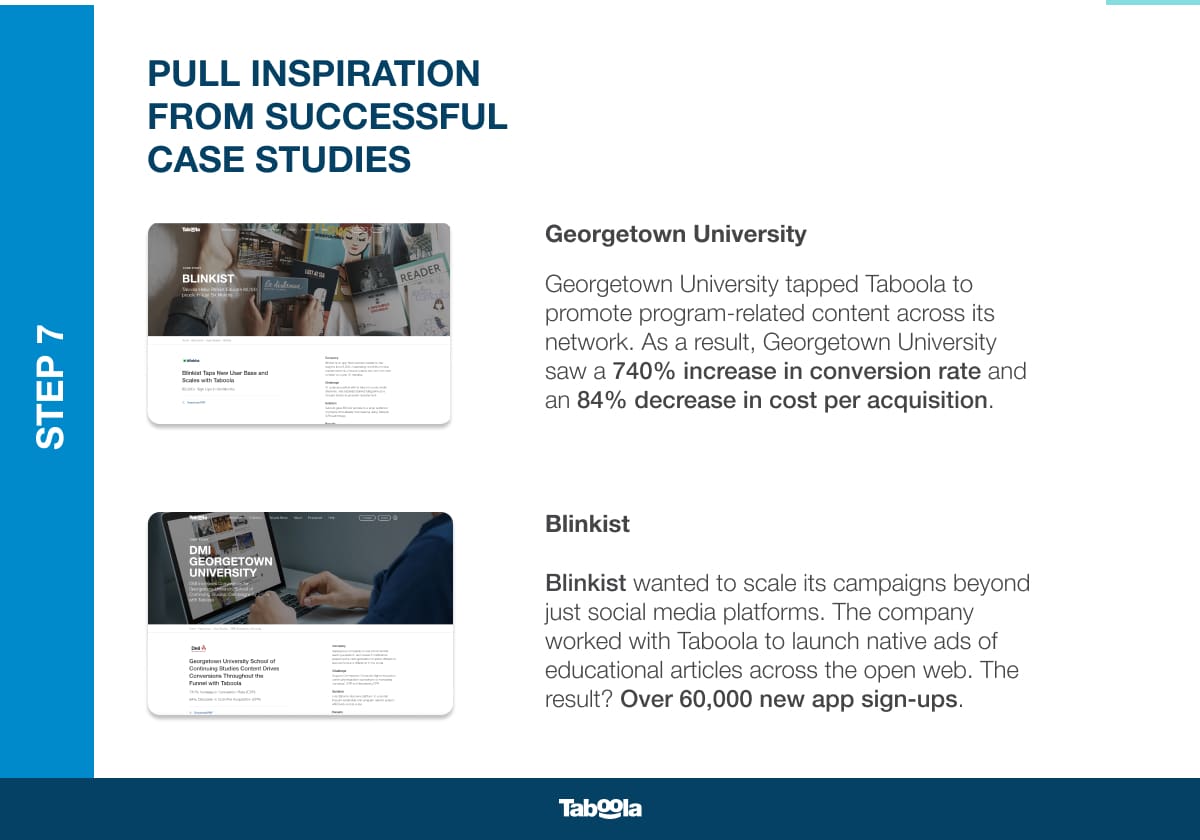
Georgetown University
Georgetown University needed to increase applications to its continuing education program. So the institution tapped Taboola to promote program-related content across its network. As a result, Georgetown University saw a 740% increase in conversion rate and an 84% decrease in cost per acquisition.
Blinkist
Blinkist, an app that distills books and podcasts into easy-to-digest content, wanted to scale its campaigns beyond just social media platforms. The company worked with Taboola to launch native ads of educational articles across the open web. Taboola was even able to track app downloads directly from these campaigns, fueling further optimization. The result? Over 60,000 new sign-ups.
Learn more about how Blinkist finds fast growth with Taboola:
Ace Your Back-to-School Campaigns
Now’s the time for retailers to hit the books and plan their back-to-school campaigns. Especially since shoppers are eager to make the right purchases for their new, in-person classes, advertisers have a huge opportunity to engage interested buyers and drive sales. Just remember to use data-backed best practices and work with platforms and publishers you can trust, so you’ll be best prepared to make the grade this season.

